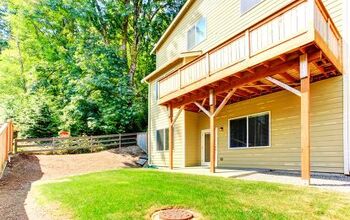What Are The Pros And Cons Of Basement Ceiling Insulation?

Basements can be used for so many “extras”—extra storage space, extra living space, extra office space. They are one of those added bonuses in a house.
However, because they are partially or completely underground, they can be a problem spot. Mold, dampness, poor temperature control—basements can have them all. In some cases, insulating your basement ceiling could fix a lot of these issues. But it’s important to know the best and worst scenarios for basement ceiling insulation.
Basement ceiling insulation promotes energy efficiency. It helps regulate the room’s temperature while avoiding air leaks to the floors above. Insulation adds a sound-proof layer and keeps allergens from traveling to other parts of the house.
Adding insulation may mean losing ceiling height. If the space is not properly ventilated, you’ll decrease airflow and potentially increase dampness. It can also be a costly project.
Do You Need Insulation Installers?
Get free, zero-commitment quotes from pro contractors near you.

When to Insulate a Basement Ceiling
General insulation of a basement is important. Basements are susceptible to dampness and air leaks, and insulation could alleviate those issues. Sometimes, insulation is required by law.
R-Value
Some building codes require insulation in basements as well as a certain R-value. The R-value, where R stands for thermal resistance, is the system used to rate insulation. A high R-value equals highly effective insulation.
Be sure to find out if insulation is required in your basement to meet code standards. The most common R-values for ceilings are R-30, R-38, and R-40. The code requirements are dependent on your region.
Using the Basement as Living Space
There are some discrepancies as to whether or not you should insulate a basement ceiling in this circumstance.
You can insulate the ceiling if your basement has a ventilation system. If you’re not required by code laws to insulate, then the choice is yours.
If your basement does not have a ventilation system, then it’s not recommended to insulate the ceiling. The insulation blocks the rooms above from dispersing heat down there which makes the basement significantly colder. This is not ideal for a living space.
That being said, you still should follow your building codes. If you wish to use your unventilated basement as a living space but are required to have insulation, you have two choices. You can either deal with the uncomfortable temperatures or put out the cost to add a ventilation system to your basement.
Pros of Basement Ceiling Insulation
If done properly, insulating your basement ceiling makes the space more comfortable. Not only that, but it can increase the energy efficiency in your home.
An Energy-Efficient Choice
The basement ceiling connects to the first floor of your home. Insulating the ceiling could prevent other parts of the house from being affected by the air leaks and dampness basements are known for.
Without proper insulation in your basement, it will be hot in the summer and cold in the winter. The heat and air have to work harder to warm the space. Insulation provides an energy-efficient solution to this problem.
Temperature Regulation
If you plan to use your basement for anything other than storage, the temperature of the room makes all the difference. Insulating the ceiling keeps the heat contained in the room instead of rising to the rooms above it. This keeps the room at an even temperature. Neither heat nor air can escape into any crevices.
As mentioned above, ventilation is key when insulating a basement ceiling so the space is livable. Without proper ventilation, the insulation won’t regulate the temperature of the room.
Sound Barrier
If you choose to use your basement as an additional bedroom or office space, ceiling insulation offers noise regulation. With a sound-proofing layer between them, the rooms above won’t disturb those in the basement.
It goes the opposite way, too. If you want to use your basement as a rehearsal space, the insulation can cut down on the sound traveling to the rest of the house.
Allergen Blocker
Many people choose to use their basement solely for additional storage. When used this way, dust and other allergens have a tendency to accumulate. Insulating the ceiling can keep these allergens from escaping to the upper floors.
Cons of Basement Ceiling Insulation
Insulating a basement ceiling is not without its disadvantages. We’ve already hinted at a few of them, but let’s explore them more in-depth.
Loss of Height
Adding insulation means losing ceiling height, especially if you have to double up on insulation to maximize energy efficiency. This will definitely happen if you use fiberglass insulation.
While that might not be a deal-breaker for some, others may find the shorter ceiling height to feel claustrophobic. The standard height for a finished basement ceiling is seven feet. To put that into perspective, the average ceiling height of the main rooms in a house is nine feet.
Loss of Airflow
We’ve already mentioned the potential problems that could arise should your basement not already have a ventilation system. By this, we mean something more than a ventilation window, especially if you want it to be a livable space.
If the space is not properly ventilated, adding insulation to the ceiling can decrease airflow. What little airflow from the rest of the house that might filter to the basement is blocked. Decreased airflow causes an increased risk of condensation and dampness, which may lead to mold.
So, while an uninsulated ceiling is bad for energy efficiency, an insulated ceiling could end up causing more damage in certain cases.
Cost
We’re not only talking about the cost of the insulation. You’ll have to factor in the cost of sorting out a venting system to avoid moisture and mold.
Over time, insulation should be replaced, which means you’ll have a continuous cost associated with this one project. Replacement is inevitable, particularly with fiberglass insulation. If for some reason it gets wet, the only way to fix fiberglass is to replace it.
But that’s not all. You may also need to wrap any water heaters, ductwork, and pipes in order to prevent breakage during the winter.
The cost of all this may outweigh the energy efficiency gains.
Cost to Insulate a Basement Ceiling
For materials, the national average cost is $0.95 per square foot. But the range can fall anywhere between $0.57 and $1.33 per square foot.
The total price for labor and materials ranges from $1.18 to $2.65 per square foot with the average being $1.92 per square foot.
Types of Insulation
Blanket (or Batt and Roll)
- Can be made of fiberglass, mineral wood, other natural fibers, or plastic fibers.
- Comes in a roll and is available in standard widths of stud and joist spacing.
- Flexible and easy to install.
- Recommended for unfinished ceilings.
- Least expensive, though prices vary depending on the material it’s made from
Foamboard
- Made of polystyrene, polyurethane, or polyisocyanurate.
- High R-value without being thick.
- Very flammable— must be covered with at least ½ inch of drywall.
- Must be installed correctly to avoid electrical problems.
Loose-Fill/Blow-In
- Made of cellulose, mineral wool, or fiberglass.
- Not DIY friendly. It requires special equipment to install but is good for hard-to-reach areas.
- A good choice if the ceiling has existing fixtures.
Reflexive
- Made from foil-coated kraft paper, plastic film, polyethylene bubbles, or cardboard.
- Bubble type is meant for odd-sized spaces, while others are made to fit the standard width of stud and joist spacing.
- DIY friendly.
- May create moisture problems, especially in cold climates.
- More common in attics.
Sprayed Foam/In-Place Foam
- Made of plastic resin or polyurethane.
- Good for adding insulation to finished areas, especially in hard-to-reach spaces.
- Must use pressure sprayer if spraying large amounts.
Do You Need Insulation Installers?
Get free, zero-commitment quotes from pro contractors near you.

Related Questions
Can you use faced insulation in a basement ceiling?
Faced insulation has a paper covering. It keeps the insulation intact so bits don’t fall to the floor or drift through the air. Faced insulation is suitable in instances where the ceiling remains unfinished. If the insulation is covered by either a suspended ceiling or drywall, unfaced insulation can be used.
What is the most sound-proof insulation?
All insulation adds a sound-proofing layer between your basement and the rest of the house. However, some are better at reducing noise. The best insulation for sounding-proofing includes mineral wood, fiberglass, blown-in cellulose, spray foam, and foam board.
Does a basement ceiling need a vapor barrier?
A vapor barrier is any material that provides a protective layer against moisture. Using a vapor barrier in a basement ceiling makes sense. When you add it to the insulation, it deters moisture and helps prevent heat loss. A vapor barrier is not totally necessary, but it’s a good preventative measure, especially if your space has moisture problems.
Conclusion
While it promotes energy efficiency, insulating your basement ceiling can cost more than you’d save on your energy bill. It does help to reduce noise and keep allergens from traveling to other parts of the house.
Whether or not you decide to insulate your basement ceiling can be determined by how much you’re willing to spend and your intended use of the space.

Brigid Levi is a wife, mother, and freelance writer who enjoys a good DIY project and creating beautiful spaces within her home. From cleaning and organization hacks to home decor ideas, she loves helping people in their quest to turn a house into a home. Her hobbies include pretending to be Joanna Gaines while updating her home with her husband and performing in local theater productions.
More by Brigid Levi



























